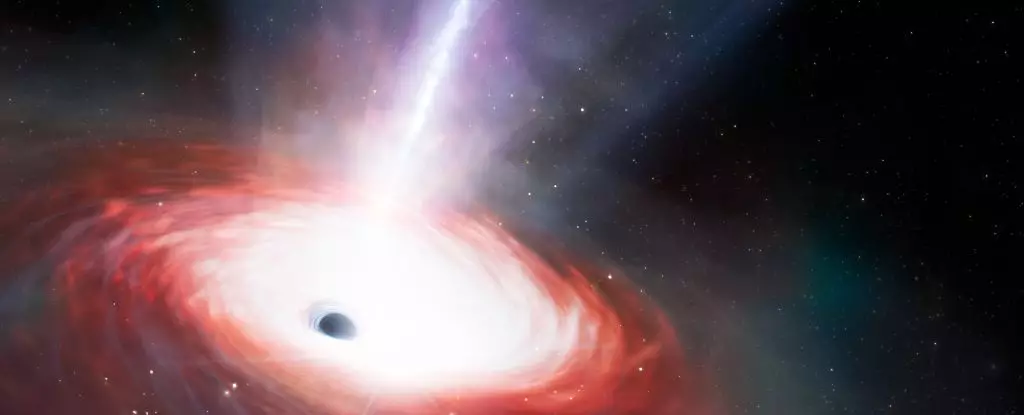The early Universe is a realm that challenges our understanding of astrophysics, particularly when it comes to the formation and growth of supermassive black holes (SMBHs). Recent observations have revealed a black hole, designated LID-568, that appears to be consuming material at an astonishing rate, breaching theoretical limits on accretion. This phenomenon raises profound questions about the mechanisms that could allow such massive entities to exist so close in time to the Big Bang.
Located approximately 1.5 billion years post-Big Bang, LID-568 has become the focus of intense scrutiny and fascination among astronomers. Utilizing the James Webb Space Telescope (JWST), a team led by Hyewon Suh from Gemini Observatory found that this galaxy houses a supermassive black hole with a mass approximately 7.2 million times that of our Sun. However, what sets LID-568 apart from its cosmic counterparts is the extraordinary rate at which it is accreting matter—over 40 times the Eddington limit.
The Eddington limit itself establishes a boundary condition for the accretion processes around supermassive black holes. Essentially, it defines the maximum luminosity a black hole can produce when it accretes material. Beyond this threshold, the outward pressure of radiation from the heated accretion disk would balance gravitational pull, thus halting further accretion. LID-568 defies this norm, hinting at unusual feeding mechanisms that could illuminate the pathways through which supermassive black holes attain their gigantic sizes.
While conventional wisdom dictates that black holes should not exceed the Eddington limit without some form of destabilizing mechanism coming into play, LID-568 appears to be operating under a different set of rules. Scientists theorize a phase known as “super-Eddington accretion,” during which a black hole can temporarily exceed this critical threshold and consume mass at an incredible rate. During such events, the intense gravitational forces at play can draw in more material due to the overwhelming accretion disk dynamics, which create a swirl that traps gas and dust, funneling it toward the black hole’s event horizon.
The JWST’s observations revealed powerful outflows from LID-568, a clear sign that material is being ejected into space even as the black hole voraciously feeds. This dichotomy highlights a fascinating interplay: while some matter is being consumed, significant amounts are being expelled, leading to speculative theories about massive black holes’ growth patterns in the early Universe.
The implications of discovering an extraordinarily feeding black hole like LID-568 are far-reaching. It suggests that the nascent supermassive black holes in the early Universe may not have formed from the same processes as those we observe today. Traditional models posit that black holes originate from the remnants of colossal stars; however, evidence now indicates that these early behemoths could have emerged from massive clouds of gas collapsing directly under gravity without a stellar precursor.
The observation of LID-568, particularly its excessive accretion rate, could reinforce the notion that super-Eddington events played a crucial role during the formative years of the Universe. By allowing black holes to amass extremely high masses in a relatively short time frame, these conditions would facilitate the rapid evolution of massive structures that we see distributed throughout the cosmos today.
As astronomers analyze the data gleaned from LID-568, they anticipate that this enigmatic object will serve as a critical focal point for investigating the dynamics of supermassive black holes. Understanding LID-568’s feeding mechanisms may unearth the complexities of not just black hole growth but also the broader dynamics shaping galaxy formation.
In this pursuit, the collaboration between advanced observational technologies such as JWST and dedicated astrophysical research will be essential. Continued study of super-Eddington accretion could unveil insights into the processes that dictate the evolution of black holes and their associated galaxies during the Universe’s earliest epochs.
The discovery of LID-568 as a supermassive black hole devouring matter at an unprecedented rate is a groundbreaking moment in cosmology. As researchers delve deeper into its characteristics, they might not only redefine black hole formation theories but also enhance our understanding of the early Universe itself. With each observation, we inch closer to deciphering the mysteries that underlie the cosmos, providing a clearer picture of the evolution of these celestial titans.


Leave a Reply